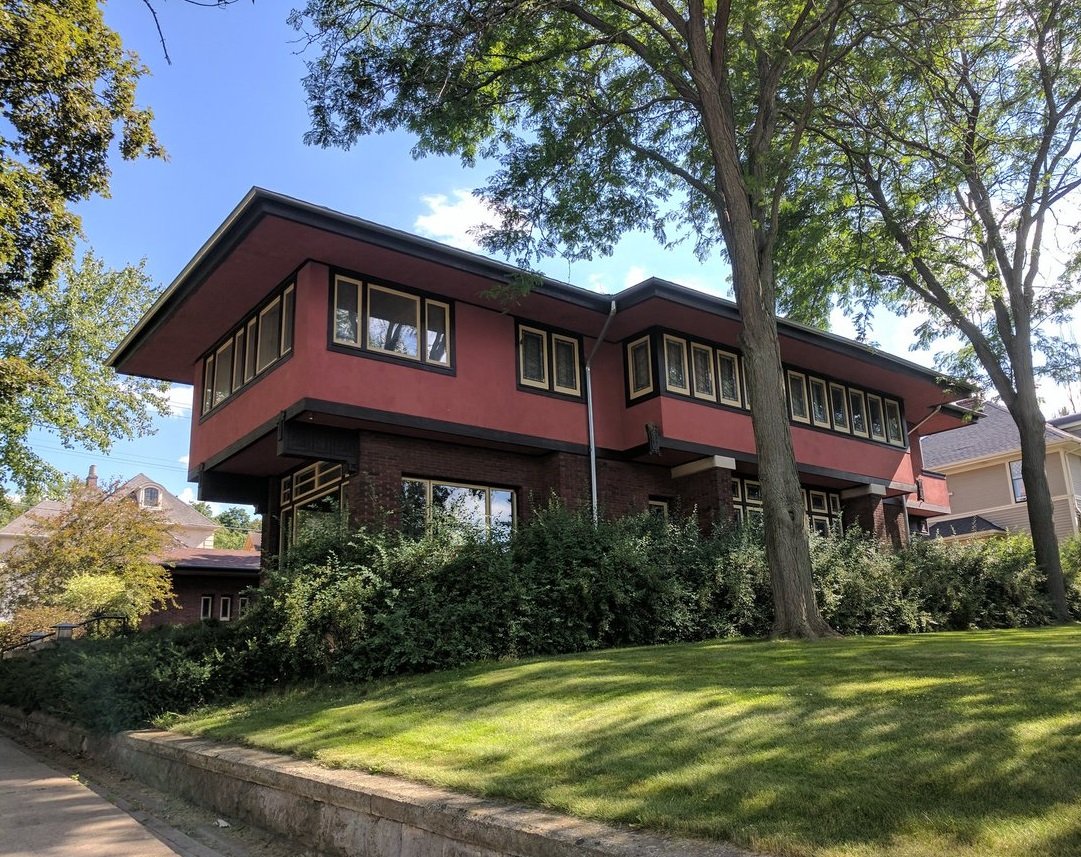#11989. Horizontal Prairie Style Facade: Terracotta Aesthetics and Organic Landscape Integration
The house presented in the image exemplifies Prairie Style architecture, developed by Frank Lloyd Wright in the early 20th century. The facade demonstrates characteristic features of this style: horizontal lines emphasized by wide roof overhangs, ribbon windows, and an overall low-slung form that visually extends the building.
The lower level is constructed with dark red brick, creating a solid foundation and visual contrast with the upper floor. The upper part of the facade is painted in a terracotta color, enhancing the connection with the natural surroundings. The windows are framed with contrasting dark frames, visually united into horizontal bands, which is a classic technique of the Prairie style.
Particularly notable are the projecting eaves with a flat roof, creating deep shadows and protecting the windows from direct sunlight. The facade design employs the principle of asymmetrical balance, where the rhythm of window openings and projecting elements form a harmonious but not mirrored composition.
In one's own home construction, several elements could be borrowed from this example: the combination of different materials (brick and painted stucco), horizontal lines for visually extending the facade, thoughtful window placement to ensure natural lighting, and integration of the home into the surrounding landscape, as shown by the abundant vegetation around the structure.
